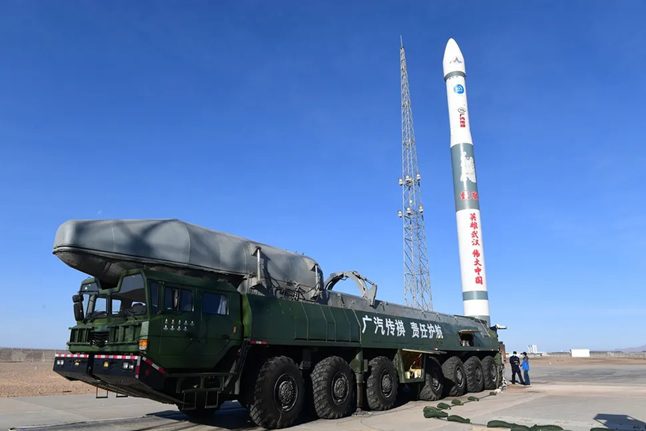The Starship/Super Heavy suffered a serious launch failure during a suborbital flight test, for the second time in a row.
Numerous observers in the Bahamas and at least one aircraft saw the Starship stage break up into fiery debris at nearly nine minutes after its lift-off from Boca Beach, Texas, US, at 2330 GMT on 6 March.
Airliners were temporarily prevented from taking off from nearby airports (Miami, Fort Lauderdale, Orlando and Palm Beach) following orders from the Federal Aviation Administration (FAA). Some airspace over the Caribbean was also closed off. Around 240 flights were disrupted of which 171 departures were delayed and 28 flights diverted, the FAA told Seradata.

Starship flight IFT-8 breaks up as seen from airliner. Courtesy: X.com/@Degen_Zee
https://x.com/Degen_Zee/status/1897808441814794740
SpaceX stated “surviving debris would have fallen within the pre-planned Debris Response Area” in an official statement published on 6 March. However, the FAA activated a Debris Response Area, something that only occurs if debris falls outside of the identified closed aircraft hazard areas, in the immediate aftermath of the failure. Determining the debris field is part of the FAA’s mishap investigation.
What happened to Starship/Super Heavy?
The Super Heavy booster’s first-stage ascent went smoothly, as did the successful ‘hot fire’ separation with the Starship’s Raptor engines already ignited.
However, after nearly reaching the end of its burn, Starship lost thrust on four of its six vacuum-designed Raptor engines and began to tumble. It then broke up, re-entering over the Caribbean. SpaceX described the explosive failure as a “rapid unscheduled disassembly”.
Fortunately for SpaceX, the Super Heavy first stage, Booster 15, had a better journey on the test flight. After a normal burn, it made a triumphant return to the pad where it was caught by the SpaceX Mechazilla ‘chopstick’ arms at just over seven minutes into the launch.
Possible causes
While a full investigation is underway, one theory is that a single vacuum engine failed catastrophically (either nozzle or combustion chamber) with the resulting high-velocity shrapnel taking out some of the other engines. On-board video footage showed engine debris departing from the craft. The gimballed Raptor-Vacuum engines are partly responsible for Starship’s attitude control. Without them the stage/spacecraft began to spin and tumble. Eventually aerodynamic loads broke the tumbling craft apart with the explosion seen through telescopes on Earth.
https://x.com/Degen_Zee/status/1897808441814794740
Some have noted a similarity between this failure and that of the previous IFT-7 flight. Its multiple engine failure and subsequent vehicle break-up at a similar point in the test were caused by a propellant leak and fire in the aft ‘attic’ area, due to a stronger than expected harmonic response in the propellant/engine system.
Even prior to the IFT-8 test questions were being raised about the readiness of the Starship, which is intended to be used as a human lunar landing craft for NASA’s Artemis programme. Specifically, concerns have been expressed about its complicated cryogenic refuelling technique and whether the technology will be ready. Until Starship can get to orbit, this technology cannot be tested. Some have suggested that NASA should move to a much simpler lunar lander for the initial Artemis human flights.






